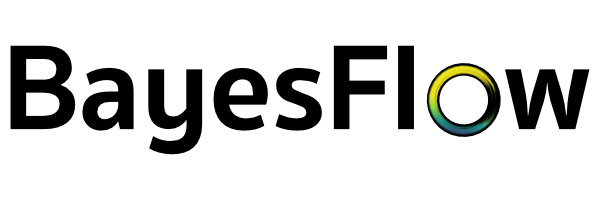SLCPDistractors#
- class bayesflow.simulators.SLCPDistractors(lower_bound: float = -3.0, upper_bound: float = 3.0, n_obs: int = 4, n_dist: int = 46, dim: int = 2, mu_scale: float = 15.0, shape_scale: float = 0.01, flatten: bool = True, rng: Generator = None)[source]#
Bases:
BenchmarkSimulatorSLCP Distractors simulated benchmark See: https://arxiv.org/pdf/2101.04653.pdf, Task T.4
- Parameters:
- lower_bound: float, optional, default: -3.0
The lower bound of the uniform prior.
- upper_bound: float, optional, default: 3.0
The upper bound of the uniform prior.
- n_obs: int, optional, default: 4
The number of observations to generate from the slcp likelihood.
- n_dist: int, optional, default: 46
The number of distractor to draw from the distractor likelihood.
- dim: int, optional, default: 2
The dimensionality of each student-t distribution in the mixture.
- mu_scale: float, optional, default: 15.0
The scale of the zero-centered Gaussian prior from which the mean vector of each student-t distribution in the mixture is drawn.
- shape_scale: float, optional, default: 0.01
The scale of the assumed np.eye(dim) shape matrix. The default is chosen to keep the scale of the distractors and observations relatively similar.
- flatten: bool, optional, default: True
A flag to indicate whather a 1D (flatten=True) or a 2D (flatten=False) representation of the simulated data is returned.
- rng: np.random.Generator or None, optional, default: None
An optional random number generator to use.
- prior()[source]#
Generates a random draw from a 5-dimensional uniform prior bounded between lower_bound and upper_bound.
- Returns:
- paramsnp.ndarray of shape (5, )
A single draw from the 5-dimensional uniform prior.
- observation_model(params: ndarray)[source]#
Generates data from the SLCP model designed as a benchmark for a simple likelihood and a complex posterior due to a non-linear pushforward params -> x. In addition, it outputs uninformative distractor data.
- Parameters:
- params: np.ndarray of shape (params, D)
The location parameters of the Gaussian likelihood.
- Returns:
- x: np.ndarray of shape (n_obs*2 + n_dist*2, ) if flatten=True, otherwise
np.ndarray of shape (n_obs + n_dist, 2) if flatten=False
- rejection_sample(batch_shape: tuple[int, ...], predicate: Callable[[dict[str, ndarray]], ndarray], *, axis: int = 0, sample_size: int = None, **kwargs) dict[str, ndarray]#
- sample(batch_shape: tuple[int, ...], **kwargs) dict[str, ndarray]#
Runs simulated benchmark and returns batch_size parameter and observation batches
- Parameters:
- batch_shape: tuple
Number of parameter-observation batches to simulate.
- Returns:
- dict[str, np.ndarray]: simulated parameters and observables
with shapes (batch_size, …)
- sample_batched(batch_shape: tuple[int, ...], *, sample_size: int, **kwargs)#
Sample the desired number of simulations in smaller batches.
Limited resources, especially memory, can make it necessary to run simulations in smaller batches. The number of samples per simulated batch is specified by sample_size.

